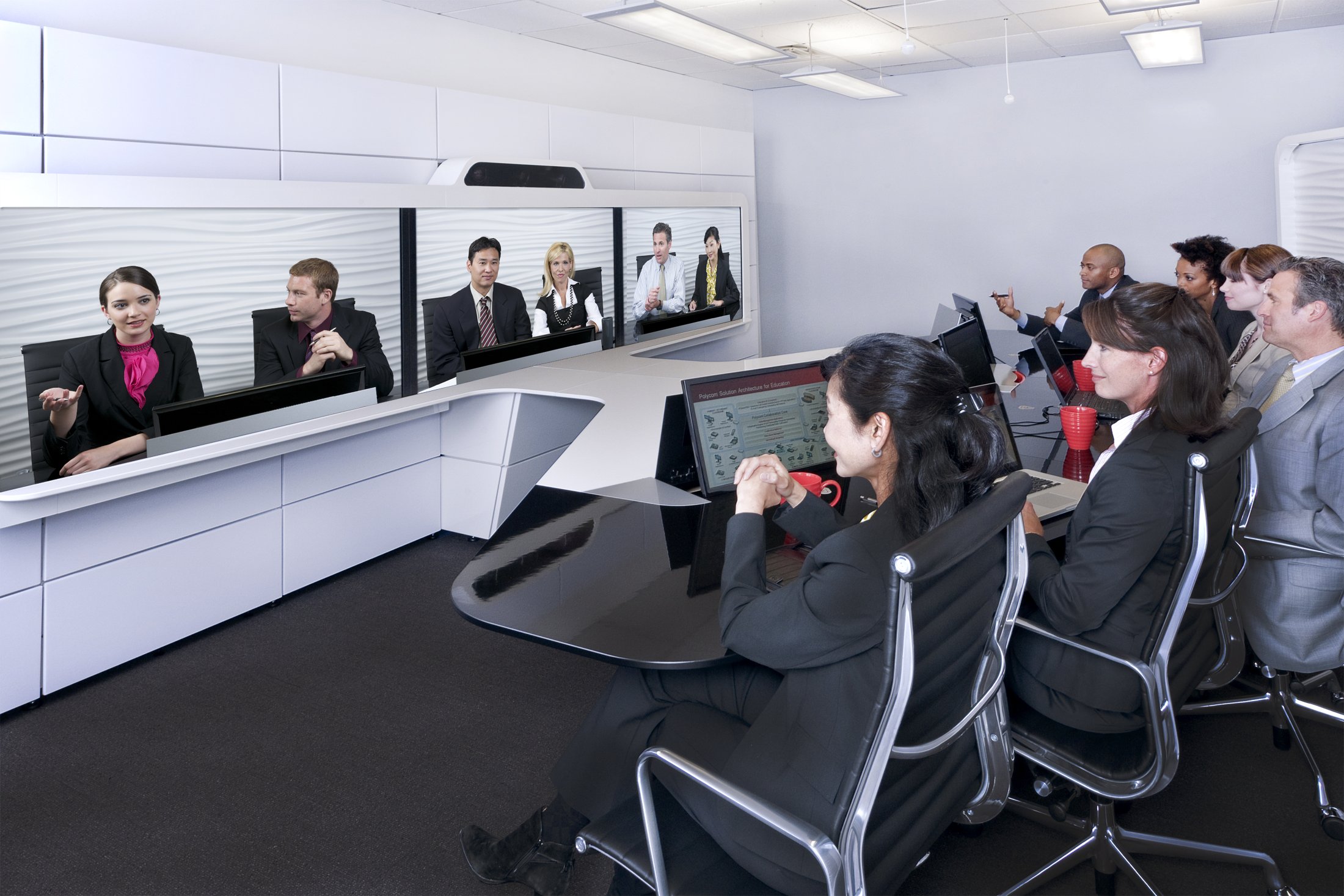 In keeping with a concerted effort to keep the competitive pressure on Cisco, Polycom announced this morning, as part of its InfoCom presence, the OTX, a new line of next generation telepresence suites. The OTX is quite the departure from the routine Polycom design with several design enhancements.
In keeping with a concerted effort to keep the competitive pressure on Cisco, Polycom announced this morning, as part of its InfoCom presence, the OTX, a new line of next generation telepresence suites. The OTX is quite the departure from the routine Polycom design with several design enhancements.
Taking a page from the TANDBERG T3, Polycom has toned down the natural wood accents of its RPX and TPX lines and upgraded the white-black plastic/techno finish style that appeals to Asian and European decision-makers.
The unusual bridge joining the participants to the monitors helps to reinforce the illusion of actually being in the same room, but perhaps more importantly, the bridge provides a hidden but accessible path for electronics and cables between the monitors, the network and the participants. Aesthetically useful and functional.
Appropriately built into the table are power and network connection wells, that simply popup to reveal pockets for Ethernet and power connections for the laptop-carrying participant. Any of the People + Content features are available for data sharing.
Polycom also implemented a clever backdrop ‘wave’ that serves not only as a visual reinforcer (white-ish ivory) reflects well, further working to eliminate shadows behind the participants and looks great as a backdrop and retains solid acoustic properties by reducing the incidence of audio reflection.
Question: Will the wave be a big dust or fingerprint collector? Housekeeping staffs take note!
 Of course, as much as the black reflective surfaces and white enamel finishes are un-Polycom (telepresence suites anyways), the OTX still retains many features that reflect its heritage as a Polycom system. It is designed for multiple uses – so in addition to the six users shown, the main table can also support a non-telepresence meeting by engaging four others on the opposite side of the table, in front of the screens facing the meeting participants.
Of course, as much as the black reflective surfaces and white enamel finishes are un-Polycom (telepresence suites anyways), the OTX still retains many features that reflect its heritage as a Polycom system. It is designed for multiple uses – so in addition to the six users shown, the main table can also support a non-telepresence meeting by engaging four others on the opposite side of the table, in front of the screens facing the meeting participants.
The OTX is designed as a room-in-a-room, so all the fixtures are included – back panels (the wave wall is optional), lighting trays, suspended microphone pods, room controls, electronics and three independently motorized, but electronically unified 21.5″ popup displays for data presentations, that fold away under the table when not in use. Pushing the button in the table brings the monitor up.
21.5″ displays are puny when ten or eleven feed away, but when they’re only three or four feet in front of you, it’s a ton of real estate for presentation content. Sadly, this kind of high pixel count so close to participants will only encourage presenters who don’t know how to or why they should edit their content since they can use 10-point fonts and it will be visible to the executives participating.
There’s no need for a raised floor, cable troughs or cable bundles since all the electronics and connectors fit under the ‘bridge’ joining the table and the 3 x 65″ monitors. The OTX is designed to be a global deployment, with major certified resellers including BT Conferencing, Verizon Business, Cable & Wireless, EasyNet and AVI-SPL.
List pricing can be as much as $339,998 with the optional wave wall and lighting package of $49,999. Dealers may sell for less. FCS is scheduled for September 2010.
Also, the OTX will support H.264 Hi Profile which delivers roughly the same high definition visual and audio experience with half the bandwidth.
Polycom also plans to implement the OTX in about 30 of its global offices including London, Andover MA, Sao Paulo Brazil, New York and Melbourne.

